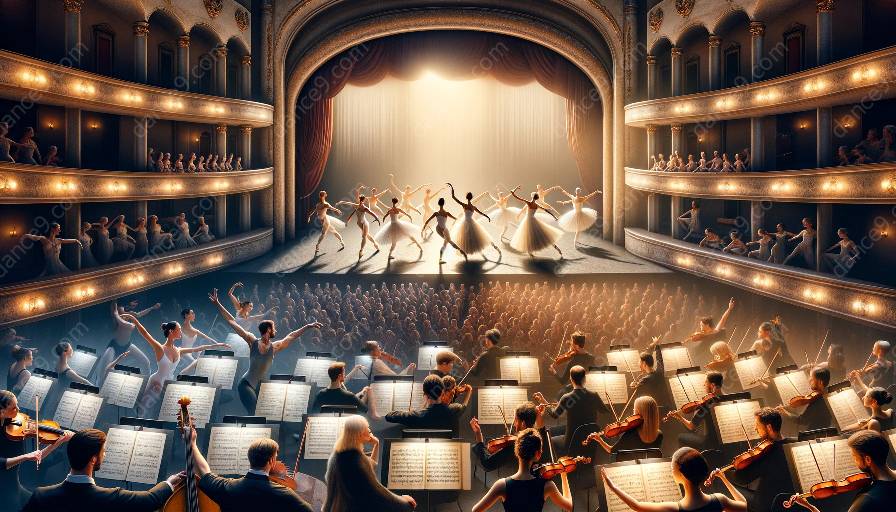Music and ballet have been interconnected for centuries, with both art forms continually evolving to create new and innovative experiences for audiences. In recent years, advancements in music technology have significantly impacted the production and performance of ballet, enhancing the art form's aesthetic, technical, and emotional dimensions.
Exploring the Influence of Music on Ballet
Understanding the influence of music on ballet production requires delving into how music has shaped the development of choreography, storytelling, and emotional expression within the ballet genre.
Development of Choreography
The integration of music within ballet has historically influenced the choreographic creation process. Composers and choreographers collaborate to incorporate specific musical compositions into choreography, using rhythm, tempo, and dynamics to inspire movement and convey narratives.
Expressive Storytelling
Music in ballet serves as a powerful tool for conveying emotion and storytelling, amplifying the impact of the dancers' movements. Composers carefully craft scores to evoke specific moods and enhance the narrative, creating a rich emotional backdrop for the dancers to interpret and embody.
Technical and Artistic Enhancements
Advancements in music technology have paved the way for innovative collaborations between composers, conductors, and choreographers. These collaborations often result in the creation of original, immersive soundscapes that complement and elevate the visual aspects of ballet performances.
Embracing Technological Innovations
With the rapid evolution of music technology, ballet productions have integrated cutting-edge innovations to create enchanting and immersive experiences for audiences. From interactive sound design to digital orchestration, technology has opened up new frontiers for artistic exploration in the ballet realm.
Interactive Sound Design
Through the use of interactive sound design, ballet performances can dynamically respond to the dancers' movements, creating a seamless fusion of music and choreography. This innovative approach enables a deeper integration of music and movement, blurring the lines between the auditory and visual elements of the performance.
Digital Orchestration
The use of digital orchestration allows ballet companies to access a broader range of musical compositions and arrangements, enhancing the diversity and creativity of their performances. This technological innovation empowers choreographers to explore unconventional musical landscapes, pushing the boundaries of traditional ballet scores.
Historical and Theoretical Perspectives
Understanding the innovations in music technology within the context of ballet production requires an exploration of ballet's rich history and theoretical foundations. From the origins of ballet to contemporary choreographic theories, the historical and theoretical aspects provide valuable insights into the evolution of ballet and its enduring relevance.
Evolution of Ballet
The historical evolution of ballet has seen the art form adapt to the changing musical landscape, from classical compositions to contemporary electronic music. This dynamic relationship between music and ballet reflects the ongoing evolution of both art forms, with each influencing the other in a reciprocal and symbiotic manner.
Theoretical Foundations
Delving into the theoretical foundations of ballet sheds light on the intricate connections between music, movement, and storytelling. Ballet theorists and scholars have explored the harmonic, rhythmic, and thematic elements of music in relation to choreographic structures, offering valuable insights into the deep interplay between music and ballet.
Impact on the Modern Performing Arts Landscape
The intersection of music technology and ballet production has redefined the modern performing arts landscape, showcasing the power of interdisciplinary collaborations and technological innovations. As ballet continues to evolve alongside music technology, audiences are treated to spellbinding performances that seamlessly weave together the beauty of classical ballet with the cutting-edge advancements of the digital age.
The Future of Music Technology in Ballet
Looking ahead, the future of music technology in ballet holds boundless possibilities, as emerging advancements open up new creative horizons for choreographers, composers, and performers. From augmented reality experiences to interactive musical environments, the marriage of music technology and ballet production is poised to usher in an era of unprecedented artistic expression and audience engagement.





























